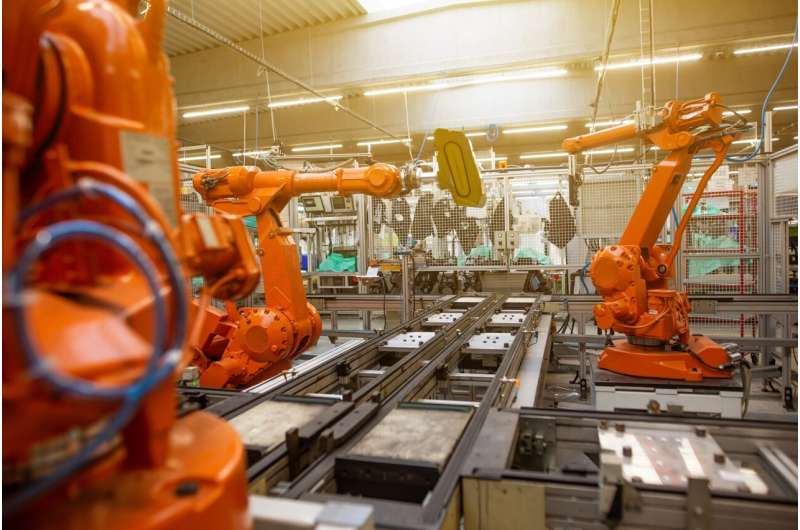This article has been reviewed according to Science X's editorial process and policies. Editors have highlighted the following attributes while ensuring the content's credibility:
fact-checked
peer-reviewed publication
trusted source
proofread
Research: Technology is changing how companies do business

In the fast-paced world of modern business, technology plays a crucial role in shaping how companies operate. One area where this impact is particularly significant is in the organization of production chains—specifically the way goods are made and distributed.
A new study from the Cornell SC Johnson College of Business advances understanding of the U.S. production chain evolution amidst technological progress in information technology (IT), shedding light on the complex connections between business IT investments and organizational design.
Advances in IT have sparked significant changes in how companies design their production processes. In the paper "Production Chain Organization in the Digital Age: Information Technology Use and Vertical Integration in U.S. Manufacturing," which published April 30 in Management Science, Chris Forman, the Peter and Stephanie Nolan Professor in the Dyson School of Applied Economics and Management, and his co-author delved into what these changes mean for businesses and consumers.
In running a manufacturing plant, a key decision is how much of the production process is handled in-house and how much is outsourced to other companies. This decision, known as vertical integration, can have big implications for a business. Advances in information and communication technology, such as those brought about by the internet, shifted the network of production flows for many firms.
Forman and Kristina McElheran, assistant professor of strategic management at University of Toronto, analyzed U.S. Census Bureau data of over 5,600 manufacturing plants to see how the production chains of businesses were affected by the internet revolution. Their use of census data allowed them to look inside the relationships among production units within and between companies and how transaction flows changed after companies invested in internet-enabled technology that facilitated coordination between them.
The production units of many of the companies in their study concurrently sold to internal and external customers, a mix they refer to as plural selling. They found that the reduction in communication costs enabled by the internet shifted the mix toward more sales outside of the firm, or less vertical integration.
"The internet has made it cheaper and faster for companies to communicate and share information with each other. This means they can work together more efficiently without the need for as much vertical integration," said Forman.
While some might worry that relying on external partners could make businesses more vulnerable, the research suggests otherwise. In fact, companies that were already using a plural governance approach before the internet age seem to be the most adaptable to these changes. Production units that were capacity-constrained were also among those that made the most significant changes to transaction flows after new technology investments.
"Technology is continuing to reshape the way companies operate and are organized," Forman said. "More recently, changes in the use of analytics in companies have been accompanied by changes in organizations, and the same is very likely ongoing with newer investments in artificial intelligence."
The research highlights the importance of staying ahead of the curve in technology. Companies that embrace digital technologies now are likely to be the ones that thrive in the future. And while there are still many unanswered questions about how these changes will play out, one thing is clear: The relationship between technology and business is only going to become more and more intertwined in the future.
More information: Chris Forman et al, Production Chain Organization in the Digital Age: Information Technology Use and Vertical Integration in U.S. Manufacturing, Management Science (2024). DOI: 10.1287/mnsc.2019.01586
Journal information: Management Science
Provided by Cornell University





















